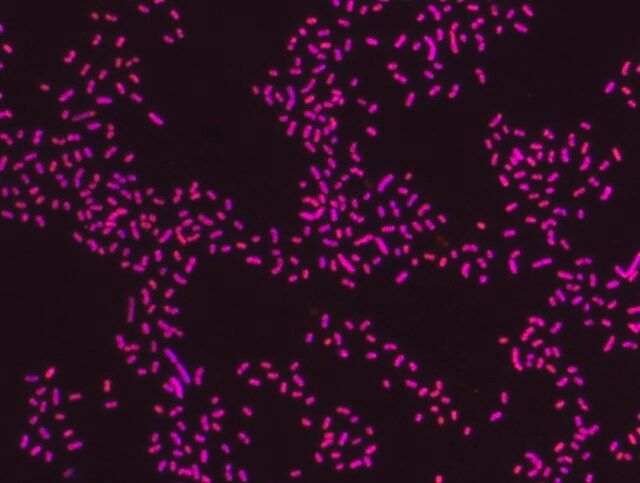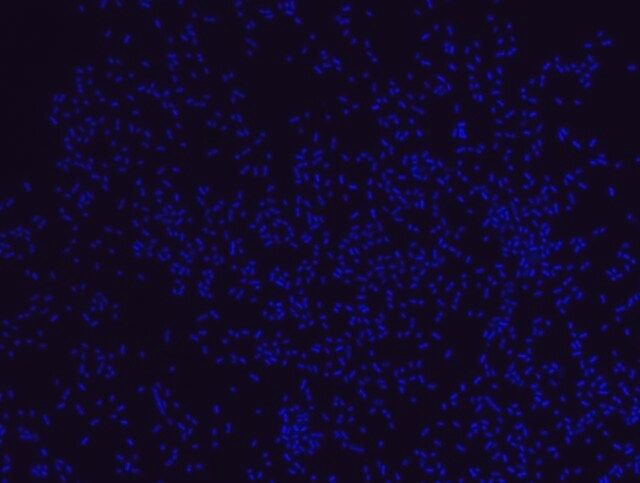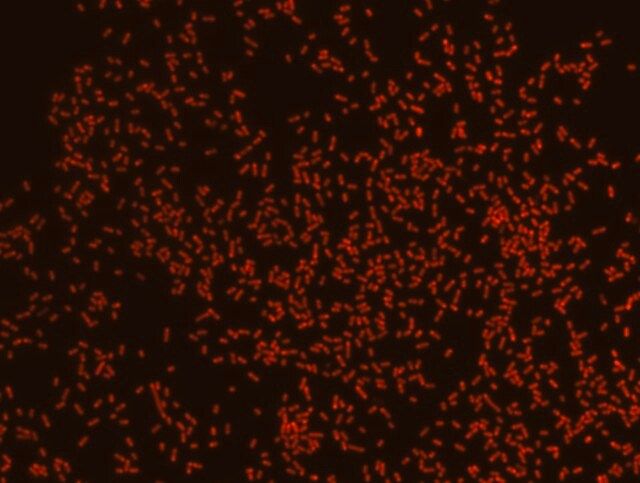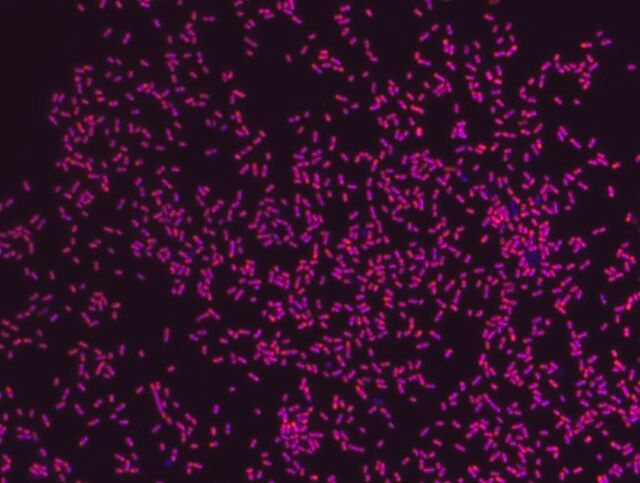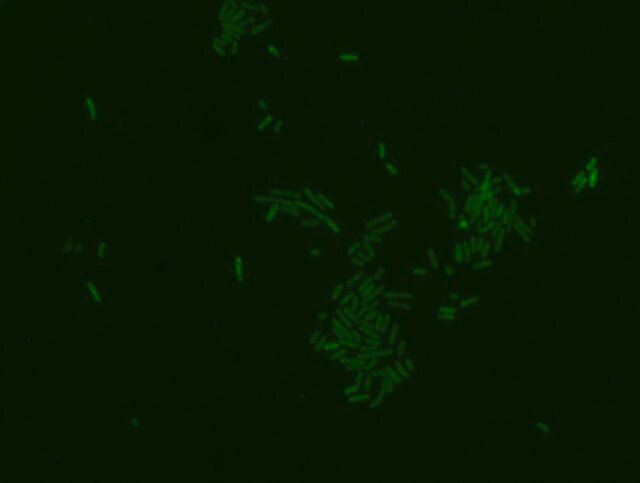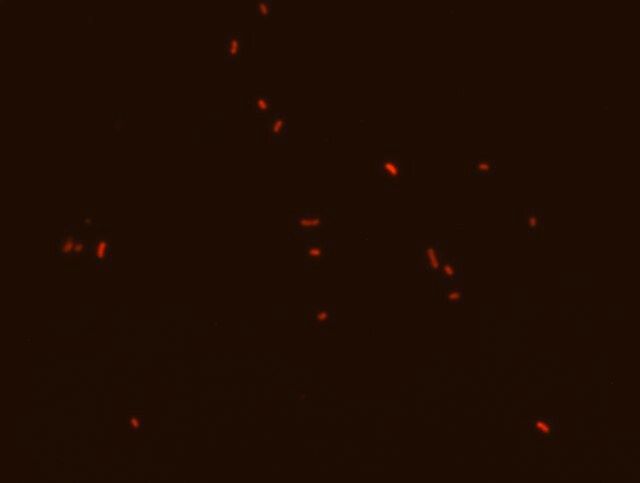您的位置:首页 > 产品中心 > Proteus FISH probe-Cy3
Proteus FISH probe-Cy3
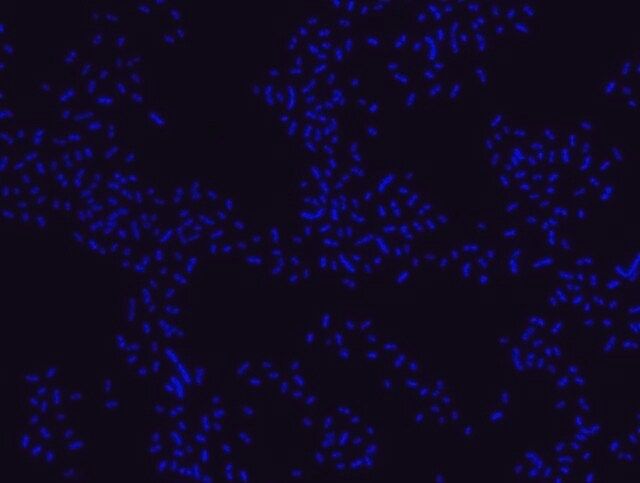


| 产品编号: | 4140013 |
| 规格: | Probe for fluorescence in situ hybridization (FISH),20 μM in water |
| 包装规格: | 50 μL |
| 产品类别: | 进口试剂 |
| 品牌: | Sigma-Aldrich |
| 优惠价: | 立即咨询 |
产品性质
| Quality Level【质量水平】 | 200 |
| shelf life【保质期】 | 2 yr |
| fluorescence【荧光】 | λex 550 nm; λem 570 nm (Cy3) |
| shipped in【运输】 | dry ice |
| storage temp.【储存温度】 | −20℃ |
基本信息
| General description【一般描述】 | Fluorescent In Situ Hybridization technique (FISH) is based on the hybridization of fluorescent labeled oligonucleotide probe to a specific complementary DNA or RNA sequence in whole and intact cells.1 Microbial FISH allows the visualization, identification and isolation of bacteria due to recognition of ribosomal RNA also in unculturable samples.2 FISH technique can serve as a powerful tool in the microbiome research field by allowing the observation of native microbial populations in diverse microbiome environments, such as samples from human origin (blood3 and tissue4), microbial ecology (solid biofilms5 and aquatic systems 6) and plants 7. It is strongly recommended to include positive and negative controls in FISH assays to ensure specific binding of the probe of interest and appropriate protocol conditions. We offer positive (MBD0032/33) and negative (MBD0034/35) control probes, that accompany the specific probe of interest. Proteus probe specifically recognizes Proteus species (see images of Proteus vulgaris and Proteus mirabilis). Moreover, it was shown that this probe recognizes Proteus penneri and Proteus hauseri.16 P. mirabilis and P. vulgaris are gram negative facultative anaerobic rod-shaped bacteria. Bacteria of the genus Proteus (Proteus spp.) of the family Enterobacteriaceae are opportunistic human pathogens, that often reside in the human intestine, and are responsible for wound and burn infections as well as skin, eye, ear, nose, throat, urinary tract, and gastrointestinal infections and bacteremias.8,9 Proteus genus that includes P. mirabilis, P. vulgaris, Proteus penneri and Proteus hauseri, are widespread in the environment and often serve as an indicator for soil or water fecal pollution.9 P. mirabilis causes up to 90% of all Proteus spp. infections and is more frequently associated with urinary tract infections then P. vulgaris.9 Proteus spp. have various virulence factors such as, fimbriae, flagella, enzymes (urease, proteases, and amino acid deaminases), and toxins (hemolysins and endotoxin).10 The most common infection involving P.mirabilis occurs when the bacteria, which is a member of the natural intestinal flora, moves to the urethra and urinary bladder causing urinary tract infection. The outer-membrane lipopolysaccharide (LPS) is considered an important virulence factor of Proteus.10 The immunological response against P. mirabilis LPS might play a role in rheumatoid arthritis.11 A possible correlation between the abundance of P.mirabilis in the intestine and obesity was suggested recently.12 P. vulgaris inhabits the intestinal tract of humans and animals and can be found in soil, water and feces.8 Moreover, it was also observed in fecal samples of healthy individuals.13 P. mirabilis has developed resistance to various classes of antibiotics, such as β-lactams aminoglycosides and tetracyclines.14 However, P. mirabilis strains are generally more susceptible to antimicrobials than are P. vulgaris, P. penneri, and P. hauseri.15 FISH technique was successfully used for clinical detection of Proteus spp. in artificial urine medium and urine samples from patients with UTIs. The probe was able to detect 11 strains of P.mirabilis, 6 strains of P. vulgaris, 2 strains of P.penneri and one strain of P. hauseri.16 The probe can also be used to detect P. mirabilis and P. vulgaris pure culture (as described in the figure legends). FISH can also be implicated to detect Proteus spp. in colon sections embedded in paraffin.17,18 Moreover, FISH can be implicated to identify Proteus spp. in the gut of the medicinal leech.19 |
| Application【应用】 | Probe for fluorescence in situ hybridization (FISH),recognizes Proteus vulgaris and Proteus mirabilis cells. |
| Features and Benefits【特点和优势】 |
|
安全信息
| Storage Class Code【储存分类代码】 | 12 - Non Combustible Liquids |
| WGK | nwg |






